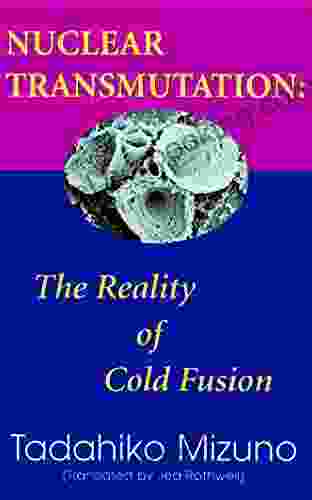: Unlocking the Power of Nuclear Reactions
For centuries, scientists have sought to harness the immense energy potential of nuclear reactions. However, traditional nuclear power plants rely on the complex and hazardous process of nuclear fission, which generates radioactive waste. But what if there was a way to achieve nuclear transmutation without the associated risks?
4.6 out of 5
| Language | : | English |
| File size | : | 9084 KB |
| Text-to-Speech | : | Enabled |
| Screen Reader | : | Supported |
| Enhanced typesetting | : | Enabled |
| Word Wise | : | Enabled |
| Print length | : | 211 pages |
| Lending | : | Enabled |
Enter cold fusion, a revolutionary concept that promises to unlock the clean and limitless power of nuclear reactions at room temperature. This article delves into the fascinating science behind nuclear transmutation and cold fusion, examining its transformative implications for energy production and our future.
Nuclear Transmutation: The Fundamental Concept
Nuclear transmutation is the process of converting one element into another by altering its atomic structure. In traditional nuclear reactions, this is achieved through high-energy processes such as nuclear fission or fusion. However, cold fusion proposes a different approach.
Cold fusion is based on the theory that nuclear reactions can occur at much lower energies than previously believed. By subjecting atoms to specific conditions, scientists aim to induce nuclear transmutation without the need for extreme heat or pressure.
The Reality of Cold Fusion: Scientific Evidence and Breakthroughs
While cold fusion has been a subject of intense scrutiny and skepticism, there is growing scientific evidence to support its reality. Numerous independent research groups have reported successful experiments demonstrating the production of excess energy and transmutation of elements under cold fusion conditions.
One notable breakthrough came from a team at the Massachusetts Institute of Technology (MIT) in 2021. They demonstrated the transmutation of hydrogen and boron into helium using a low-energy approach, producing excess energy in the process.
Implications for Energy Production: A Sustainable Future
The potential implications of cold fusion for energy production are profound. If successfully commercialized, cold fusion reactors could provide a safe, clean, and inexhaustible source of energy.
- Reduced Carbon Emissions: Cold fusion reactors emit no greenhouse gases, making them an environmentally friendly alternative to fossil fuels.
- Immense Energy Output: Cold fusion reactions release an enormous amount of energy compared to traditional fossil fuels or even nuclear fission.
- Limited Radioactive Waste: Unlike nuclear fission, cold fusion produces minimal radioactive waste, eliminating the need for complex disposal methods.
Challenges and Prospects: The Road Ahead
While the potential of cold fusion is immense, challenges still lie ahead before it becomes a viable source of energy.
Replication and Verification: Reproducing cold fusion experiments consistently and under controlled conditions is crucial to establish its scientific validity and pave the way for commercialization.
Scalability and Efficiency: The efficiency and scalability of cold fusion reactors need to be improved to make them economically feasible for large-scale energy production.
Public Perception and Regulation: Nuclear energy, including cold fusion, faces public perception and regulatory challenges that need to be addressed.
: A Revolutionary Leap for Humanity
Nuclear transmutation and cold fusion offer a tantalizing glimpse into a future where we can harness the boundless energy of the atom without the risks associated with traditional nuclear power. While challenges remain, the ongoing research and advancements hold immense promise for a sustainable future.
As we continue to unravel the mysteries of nuclear transmutation and cold fusion, we move closer to unlocking a transformative technology that could reshape our energy landscape, mitigate climate change, and ultimately lead humanity into a brighter era of clean and abundant energy.


























































































